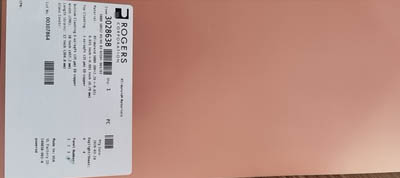In recent communications, we have received a lot of questions about the design and processing of Rogers high-frequency materials. In order to help better design and process Rogers high-frequency materials, here are some questions and answers related to application design.
Q1: What are the materials currently used in mainstream LEO applications?
For satellites in the K and Ku bands that require better power efficiency, especially insertion loss requirements, you can use our CLTE series. This series is made of PTFE material, which can not only meet the requirements of low loss, but also has multi-layer board mixing. processability. As for the application scenarios of ground terminals, mainly based on customer needs, the current mainstream application is the RO4000 series of RF PCB materials of the hydrocarbon system, including RO4003C, RO4533, RO4730G3 and RO4350B materials.

Rogers High Frequency Board Materials
Q2: What factors are related to the poor performance of VSWR?
VSWR, voltage standing wave ratio, is related to the size of signal reflection in the circuit, and furthermore, is closely related to impedance matching.
In our design, we actually need the characteristic impedance of the microstrip line to be 50 ohms. When it is not 50 ohms, its VSWR will gradually become larger, the reflection will increase, and the echo will become worse. In addition, whether the impedance transition of the signal feed is continuous will also affect the increase of signal reflection, causing the VSRWR to increase. Basically, the VSWR is required to be<1.43, and the corresponding return loss is <-15dB. If the impedance is not 50 ohms, what factors are relevant? For example, did you use the correct Dk value when calculating impedance? For example, line width size, etc.
Q3: Is the surface roughness of copper foil closely related to electrical performance such as impedance?
Copper foil roughness affects the design Dk and overall loss characteristics of the circuit. The smoother the copper foil, the smaller the total insertion loss, and the rougher the copper foil, the greater the loss. Similarly, for Dk, rough copper foil will increase the design Dk value. That is to say, the process Dk and design Dk values are different. For example, if you use Process Dk to calculate the impedance and use the design Dk including copper foil roughness to calculate the impedance value, there will be a slight difference. When performing impedance control, the influence of copper foil roughness needs to be considered.
Q4: What does frequency offset have to do with?
Many factors are related to frequency offset. For example, the Dk value is definitely relevant. There is also the surface treatment that will also have an impact. Also, if it is a coupling filter, the thickness of the copper foil and the control of the coupling gap have a direct impact. For example, for 77GHz radar PCB, line width precision control is very important. The smaller the change in line width, the better. This is one of the areas where the 9um copper foil we introduced can be improved. It can improve line width precision control, reduce frequency deviation, and increase the consistency of radar performance.